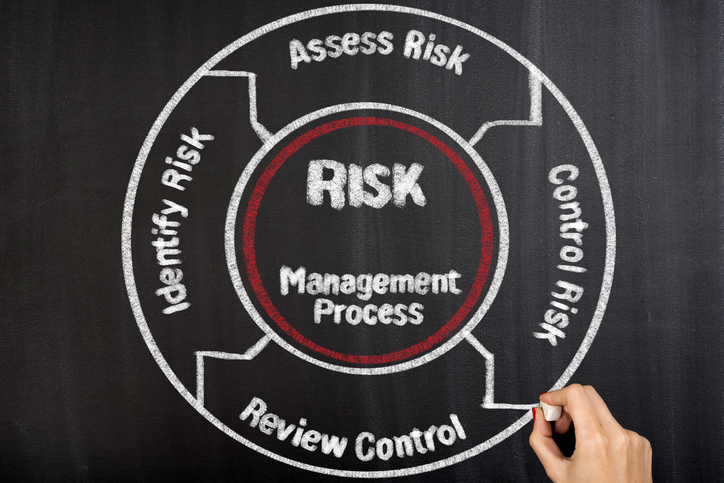3 min read
Mastering the Risk Management Framework
Understanding the Fundamentals of Risk Management Understanding the fundamentals of risk management is crucial for any organization aiming to...
3 min read
 The Amazing Team at Force One
:
Jun 18, 2024 1:28:26 PM
The Amazing Team at Force One
:
Jun 18, 2024 1:28:26 PM
Cybersecurity Risk Assessment: The Shield Against Modern Threats
Introduction
In today's digitally driven world, the increasing reliance on technology comes with significant risks. Cybersecurity risk assessment has emerged as a crucial component in safeguarding sensitive information and protecting systems from cyber threats. This article explores the definition, history, importance, current trends, challenges, solutions, and future prospects of cybersecurity risk assessment, shedding light on its relevance in contemporary society.
Definition and History
Cybersecurity risk assessment refers to the systematic identification, analysis, and evaluation of potential vulnerabilities and threats within an organization's IT infrastructure. It provides a framework to understand the risks an organization faces, enabling informed decision-making to prioritize investments in countermeasures and effectively manage risks.
The concept of risk assessment in the realm of cybersecurity has evolved alongside increasing digitalization. Historically, risk assessment focused predominately on physical security. However, with the rise of the internet and networks, cyber threats propelled the need for a dedicated approach to assessing and managing these risks.
Importance
The importance of cybersecurity risk assessment cannot be overstated. It serves as a foundation for organizations to craft a robust cybersecurity strategy, ensuring the overall protection of critical assets and confidential information.
Cybersecurity risk assessment offers several key benefits, including:
1. Preventing Cyber Attacks: By identifying vulnerabilities and potential threats, risk assessment helps organizations strengthen their defensive posture, minimizing the possibility of successful cyber attacks.
2. Regulatory Compliance: Compliance with industry and government regulations is critical in sectors that handle sensitive data. Risk assessment aids organizations in identifying gaps in compliance, enabling strategies to meet regulatory requirements.
3. Resource Allocation: Risk assessment allows organizations to effectively allocate resources by understanding the potential impacts of cyber threats. This ensures investments in cybersecurity measures are proportional to the level of risk faced.
4. Incident Response Planning: Assessing risks aids in developing incident response plans, ensuring organizations are well-equipped to enact swift and efficient response strategies when an attack occurs.
Current Trends
Several trends are shaping the landscape of cybersecurity risk assessment:
1. Cloud Computing: The rapid adoption of cloud services has necessitated assessing risks associated with storing and accessing data in a cloud environment.
2. Internet of Things (IoT): With the proliferation of interconnected devices in homes, businesses, and public spaces, assessing risks associated with IoT vulnerabilities has become crucial.
3. Machine Learning and Artificial Intelligence: Utilizing advanced analytics and machine learning algorithms to automate risk assessment processes has gained traction, assisting organizations in identifying potential threats in real time.
Challenges
Despite its importance, cybersecurity risk assessment faces several challenges:
1. Increasing Sophistication of Threats: Cyber threats are becoming more sophisticated, requiring risk assessment methodologies to keep pace with emerging threat landscapes.
2. Lack of Resources: Small and medium-sized organizations often struggle with limited budgets and skilled cybersecurity personnel, making it difficult to conduct robust risk assessments.
3. Rapid Technological Advancements: The rapid pace of technological evolution makes it challenging to keep risk assessment methodologies up to date and adaptable to emerging threats.
Solutions
To overcome these challenges, organizations can implement several solutions:
1. Collaboration: Sharing threat intelligence and best practices among organizations and industry sectors is crucial for identifying common risks and developing effective countermeasures.
2. Training and Awareness: Investing in educating employees about cybersecurity risks and best practices is essential for developing a security-conscious culture within an organization.
3. Regular Assessments and Updates: Conducting regular risk assessments ensures identification of new vulnerabilities and threats, allowing organizations to adapt their security measures accordingly.
Future Prospects
The future of cybersecurity risk assessment holds promising developments:
1. Artificial Intelligence and Automation: Utilizing AI and machine learning algorithms can enhance the speed and accuracy of risk assessments, allowing for real-time analysis and faster response times.
2. Quantum Computing: Quantum computers possess immense potential in breaking encryption algorithms. Cybersecurity risk assessments need to adapt to address this future threat.
3. Integrated Risk Management: Cybersecurity risk assessment is increasingly being integrated into broader risk management frameworks, acknowledging the interconnectedness of risks across organizational functions.
Conclusion
In today's interconnected and digitized world, cybersecurity risk assessment is critical for organizations seeking to protect their assets, information, and reputation from cyber threats. By comprehensively evaluating vulnerabilities and threats, organizations can better allocate resources, comply with regulations, and develop robust incident response plans. While challenges persist, solutions such as collaboration and regular assessments, combined with future technologies, offer a promising outlook for cybersecurity risk assessment. Embracing this holistic approach is vital to safeguarding organizational assets in an increasingly complex cyberspace.

3 min read
Understanding the Fundamentals of Risk Management Understanding the fundamentals of risk management is crucial for any organization aiming to...

3 min read
Understanding Cybersecurity Risk Management: Defending the Digital FrontierIntroduction:In our increasingly interconnected world, threats to data...

3 min read